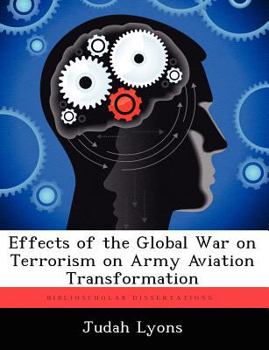Effects of the Global War on Terrorism on Army Aviation Transformation
Over the last eight years, combat operations in support of the Global War on Terrorism (GWOT) have put a tremendous strain on the US Army's aviation fleet. In February 2004, the Army canceled the cornerstone of Army Aviation Transformation, the $48 billion RAH-66 Comanche Program. In October 2008, the contract for the ARH-70 "Arapaho" was also canceled. With the cancelation of two helicopter projects in four years, some would argue that the GWOT negatively affected Army Aviation Transformation. On the other hand, the Global War on Terrorism had a positive impact on Army Aviation Transformation. The GWOT provided a sense of urgency; no longer could Army Aviation afford to wait for decades for Transformation. The GWOT forced Army Aviation leaders to reevaluate Transformation priorities and vision for the future. The GWOT was a catalyst that caused many challenges and changes to Army Aviation Transformation, which ultimately resulted in a more balanced Transformation across the entire aviation force. Rather than focusing solely on a large conventional threat, the transition to a multi-functional Combat Aviation Brigade provided the capability required to conduct full spectrum operations, across the entire spectrum of conflict. However, the question remains, what additional Transformation is required to meet the threats of the 21st Century? The recommendations proposed in this thesis could be used to modify and update Army Aviation Transformation efforts and force structure development to further strengthen the future of Army Aviation.
This work has been selected by scholars as being culturally important, and is part of the knowledge base of civilization as we know it. This work was reproduced from the original artifact, and remains as true to the original work as possible. Therefore, you will see the original copyright references, library stamps (as most of these works have been housed in our most important libraries around the world), and other notations in the work.
This work is in the public domain in the United States of America, and possibly other nations. Within the United States, you may freely copy and distribute this work, as no entity (individual or corporate) has a copyright on the body of the work.
As a reproduction of a historical artifact, this work may contain missing or blurred pages, poor pictures, errant marks, etc. Scholars believe, and we concur, that this work is important enough to be preserved, reproduced, and made generally available to the public. We appreciate your support of the preservation process, and thank you for being an important part of keeping this knowledge alive and relevant.





